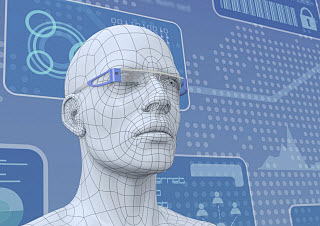The brand could be bringing its wearable technology offering to its launch on September 3.
For consumers who have been holding off when it comes to buying a smartwatch, because they have been wanting wearables that come with a lower price tag, there could be some good technology news on the way, as it is believed that ASUS will be launching just such a product on September 3.
This will mean that the wearable technology device will be seen for the first time in Berlin at the IFA conference.
Speculations are saying that this smartwatch will be based on Android Wear and it will be cheaper than other rival wearables. There have been small hints released about the device over official channels. For example, the Twitter page from ASUS has shown a picture of the device which was primarily black with what looks to be a square watch face that has been rounded off. The image was accompanied by a Khalil Gibran quote, which said that “Time has been transformed, and we have changed.” Above the quote were the words “@IFA Berlin Sept 3, 2014.”, which is a rather clear indication that the launch is on its way.
This is being interpreted as all but an official confirmation of the upcoming launch of the ASUS smartwatch.
 It also aligns quite well with the previous statement that the brand had made by CEO Jerry Shen at an investors’ conference, when he said that the wearable device would be ready for the IFA event. At that time, he also stated that the offering from ASUS would not only be better looking than those that were available from the competition, but it would also be cheaper. Beyond that, there has not been anything even close to official that has been revealed.
It also aligns quite well with the previous statement that the brand had made by CEO Jerry Shen at an investors’ conference, when he said that the wearable device would be ready for the IFA event. At that time, he also stated that the offering from ASUS would not only be better looking than those that were available from the competition, but it would also be cheaper. Beyond that, there has not been anything even close to official that has been revealed.
There are already two wearable technology watches that are available and that are based on the Android Wear operating system from Google: Gear Live, from Samsung, and the G Watch, from LG. Their prices are $199 and $229, respectively and they are both designed with square faces. It is expected that Motorola will be releasing its own Moto 360 in September, based on that operating system, but with a round face. The price tag for that mobile device is rumored to be around $250.
It is unclear exactly how much cheaper ASUS plans to make its own smartwatch. Moreover, it has yet to be revealed exactly why that item will be more inexpensive, and if it will mean that the user will need to choose between price and features.
Patent pictures hint at a new design concept for the wearable tech.
Although not everyone is on board with Google Glass, one aspect regarding this wearable device on which most people agree is the fact that it lacks aesthetic appeal and does very little for a person’s looks, but this minor issue may be rectified down the road based on the latest speculations regarding a recent acquired patent.
The new design appears to be sleeker and thicker compared to the current eyewear.
Mitchell Heinrich, Google design and prototyping engineer involved with Project Glass, was granted US patent D710,928 S on August 12. The patent shows a Google Glass design that looks far more like thick framed normal eyeglasses compared to the relatively bulky projector that sits on the side of the current device.
Heinrich’s involvement in the project is described on his website as “Early stage mechanical architecture layout. Lead the consumer packaging development for the explorer release. Developed human factors numerical and physical models to fit Glass on as many people as possible. Co-developed the bone conduction audio system including component design and testing. Broad range of low and high fidelity prototype development.”
 The patent application reveals relatively normal looking spectacles with a thick frame that features a display apparatus, which is tucked on the inside and is attached to the right arm of the glasses near the hinge. This would not only hide the projector, but make the wearable display device potentially more comfortable for the user, as they could receive information projected from the apparatus on the lenses instead of it floating in front of their eyes. This could also mean better image quality. On the other hand, this new design could end up being more obstructive to the wearer’s vision.
The patent application reveals relatively normal looking spectacles with a thick frame that features a display apparatus, which is tucked on the inside and is attached to the right arm of the glasses near the hinge. This would not only hide the projector, but make the wearable display device potentially more comfortable for the user, as they could receive information projected from the apparatus on the lenses instead of it floating in front of their eyes. This could also mean better image quality. On the other hand, this new design could end up being more obstructive to the wearer’s vision.
The new design may make people even more suspicious of Google Glass users.
Despite being more appealing to look at, this new design could raise more concerns among non-Glass users who may argue that it will make it easier for wearers to film others without these people being aware that they are being captured on film or that Glass users may find it easier to engage in other illicit activity. For instance, the smartglasses have already been banned at certain movie theaters in the US to prevent the illegal filming of movies.
Nevertheless, at the moment, the patent doesn’t reveal enough about the next-gen Google Glass for anything official to be determined. However, what has been seen certainly does appear to be a notable evolution in the product.
 It also aligns quite well with the previous statement that the brand had made by CEO Jerry Shen at an investors’ conference, when he said that the wearable device would be ready for the IFA event. At that time, he also stated that the offering from ASUS would not only be better looking than those that were available from the competition, but it would also be cheaper. Beyond that, there has not been anything even close to official that has been revealed.
It also aligns quite well with the previous statement that the brand had made by CEO Jerry Shen at an investors’ conference, when he said that the wearable device would be ready for the IFA event. At that time, he also stated that the offering from ASUS would not only be better looking than those that were available from the competition, but it would also be cheaper. Beyond that, there has not been anything even close to official that has been revealed.
 The patent application reveals relatively normal looking spectacles with a thick frame that features a display apparatus, which is tucked on the inside and is attached to the right arm of the glasses near the hinge. This would not only hide the projector, but make the
The patent application reveals relatively normal looking spectacles with a thick frame that features a display apparatus, which is tucked on the inside and is attached to the right arm of the glasses near the hinge. This would not only hide the projector, but make the 